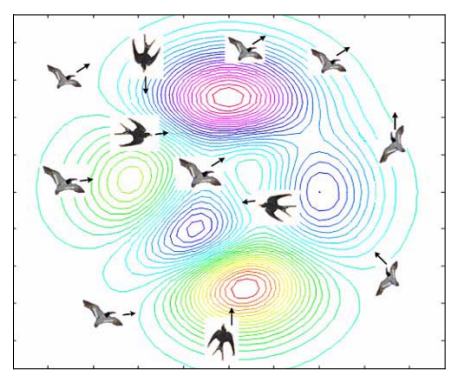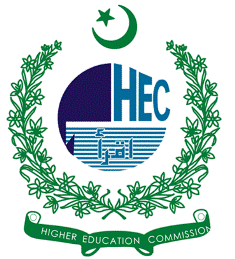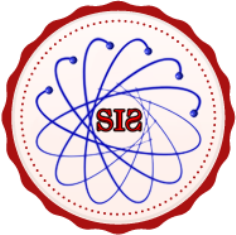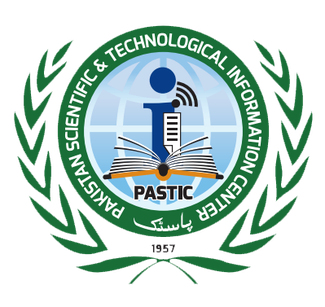Optimizing Economic Load Dispatch Using a Hybrid PSO-SA Algorithm: A Novel Approach
Keywords:
Particle Swarm Optimization (PSO), Simulating Annealing (SA), Economic Load Dispatch (ELD), Hybrid Optimization, Power System OptimizationAbstract
Economic Load Dispatch (ELD) is a crucial power system optimization task. It aims to minimize the total cost of electricity generation by strategically allocating power output among available generating units to meet the system's demand while respecting operational limits. This paper investigates how soft computing methods can improve the effectiveness of Electronic Logging Device (ELD) solutions. Specifically, Particle Swarm Optimization (PSO) and Simulated Annealing (SA) algorithms are employed to minimize generation costs for a power system comprising three generating units. The optimization process considers loss coefficients, generation limits, and a predefined cost function. Initially, PSO is used to determine near-optimal solutions, which are further refined using SA to avoid local minima. A hybrid PSO-SA method integrates the global exploration of Particle Swarm Optimization (PSO) with the local refinement of Simulated Annealing (SA) to enhance convergence and solution quality. 1 This approach was implemented in MATLAB and validated through a case study. Simulation results demonstrate that the hybrid method consistently yields high-quality solutions with reduced computational effort, proving its robustness and reliability for solving ELD problems. Combining metaheuristic algorithms shows promise for real-world power system optimization.
References
V. T. Sunil Gupta, Kamal Saluja, Ankur Goyal, Amit Vajpayee, “Comparing the performance of machine learning algorithms using estimated accuracy,” Meas. Sensors, vol. 24, p. 100432, 2022, doi: https://doi.org/10.1016/j.measen.2022.100432.
R. Rebolledo, “Stochastic Processes,” Int. Encycl. Stat. Sci., pp. 1534–1539, 2011, doi: 10.1007/978-3-642-04898-2_529.
B.T. Polyak, “Newton’s method and its use in optimization,” Eur. J. Oper. Res., vol. 181, no. 3, pp. 1086–1096, 2007, doi: https://doi.org/10.1016/j.ejor.2005.06.076.
Jasbir S. Arora, “Chapter 10 - Numerical Methods for Unconstrained Optimum Design,” Introd. to Optim. Des. (Third Ed., pp. 411–441, 2012, doi: https://doi.org/10.1016/B978-0-12-381375-6.00010-3.
Z. N. Jan, “Economic Load Dispatch using Lambda Iteration, Particle Swarm Optimization & Genetic Algorithm,” Int. J. Res. Appl. Sci. Eng. Technol., vol. 9, no. 8, 2021, [Online]. Available: https://www.ijraset.com/fileserve.php?FID=37527
M. and K. F. Mohammadi, “A dynamic programming–enhanced simulated annealing algorithm for solving bi-objective cell formation problem with duplicate machines,” Decis. Sci. Lett., pp. 261–276, 2015, [Online]. Available: https://www.growingscience.com/dsl/Vol4/dsl_2014_39.pdf
V. K. Prajapati, M. Jain, and L. Chouhan, “Tabu Search Algorithm (TSA): A Comprehensive Survey,” Proc. 3rd Int. Conf. Emerg. Technol. Comput. Eng. Mach. Learn. Internet Things, ICETCE 2020, pp. 222–229, Feb. 2020, doi: 10.1109/ICETCE48199.2020.9091743.
Arpan Kumar Kar, “Bio inspired computing – A review of algorithms and scope of applications,” Expert Syst. Appl., vol. 59, pp. 20–32, 2016, doi: https://doi.org/10.1016/j.eswa.2016.04.018.
M. Dorigo and T. Stützle, “Ant Colony Optimization: Overview and Recent Advances,” Int. Ser. Oper. Res. Manag. Sci., vol. 272, pp. 311–351, 2019, doi: 10.1007/978-3-319-91086-4_10.
Larry Hardesty, “Explained: Neural networks,” MIT News Off., 2017, [Online]. Available: https://news.mit.edu/2017/explained-neural-networks-deep-learning-0414
M. Ahmad, W. Ali, H. Farooq, M. Jamil, M. Ali, and A. Ur Rehman, “Solving the Problem of Economic Load Dispatch for a Small Scale Power System Using a Novel Hybrid PSO-GSA Algorithm,” RAEE 2018 - Int. Symp. Recent Adv. Electr. Eng., Jul. 2018, doi: 10.1109/RAEE.2018.8706897.
I. G. T. & A. T. Vasileios Charilogis, “An Improved Parallel Particle Swarm Optimization,” SN Comput. Sci., vol. 4, no. 766, 2023, doi: https://doi.org/10.1007/s42979-023-02227-9.
G. Xu and G. Yu, “On convergence analysis of particle swarm optimization algorithm,” J. Comput. Appl. Math., vol. 333, pp. 65–73, 2018, doi: https://doi.org/10.1016/j.cam.2017.10.026.
H. L. Zhao Liu, Zhiwei Qin, Ping Zhu, “An adaptive switchover hybrid particle swarm optimization algorithm with local search strategy for constrained optimization problems,” Eng. Appl. Artif. Intell., vol. 95, p. 103771, 2020, doi: https://doi.org/10.1016/j.engappai.2020.103771.
J. C. B. Shimpi Singh Jadon, Ritu Tiwari, Harish Sharma, “Hybrid Artificial Bee Colony algorithm with Differential Evolution,” Appl. Soft Comput., vol. 58, pp. 11–24, 2017, doi: https://doi.org/10.1016/j.asoc.2017.04.018.
M. S. Huimin Zhao, Weitong Gao, Wu Deng, “Study on an Adaptive Co-Evolutionary ACO Algorithm for Complex Optimization Problems,” Symmetry (Basel)., vol. 10, no. 4, p. 104, 2018, doi: https://doi.org/10.3390/sym10040104.

Downloads
Published
How to Cite
Issue
Section
License
Copyright (c) 2025 50sea

This work is licensed under a Creative Commons Attribution 4.0 International License.




















